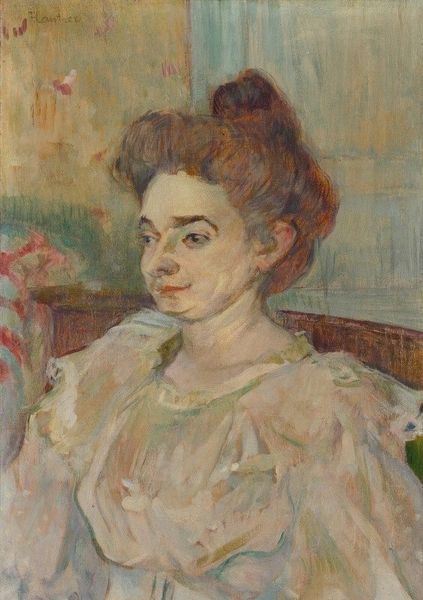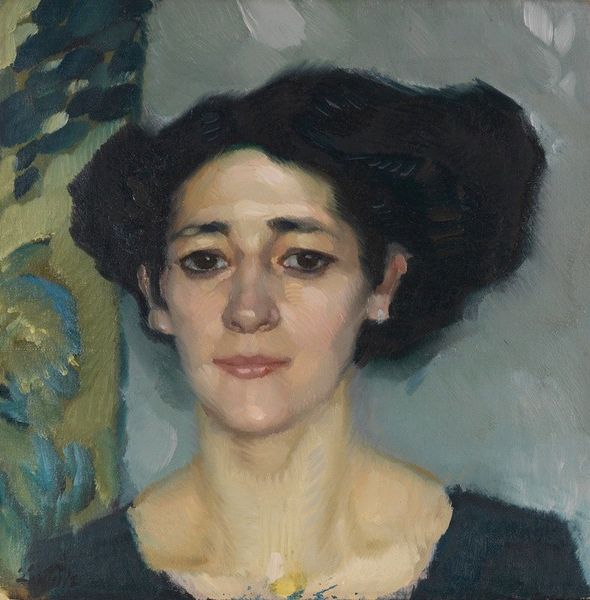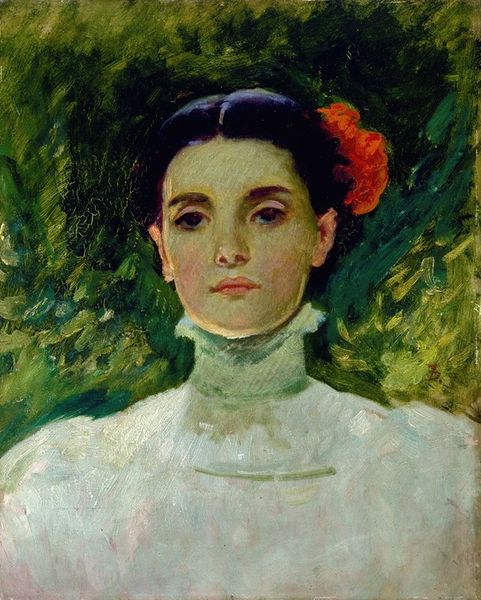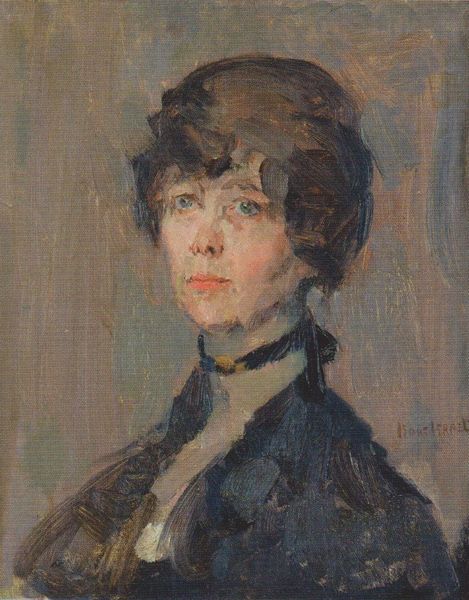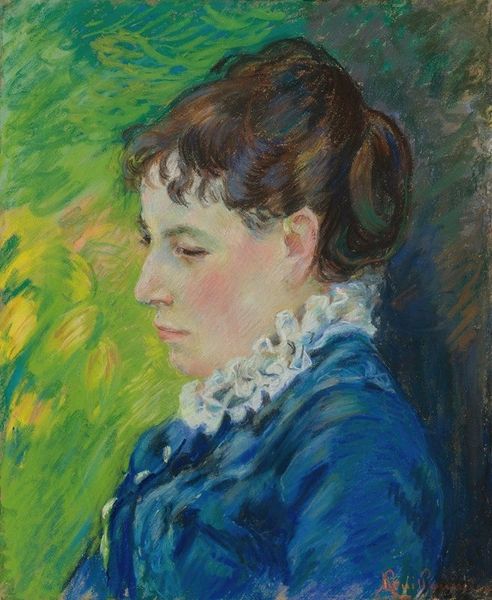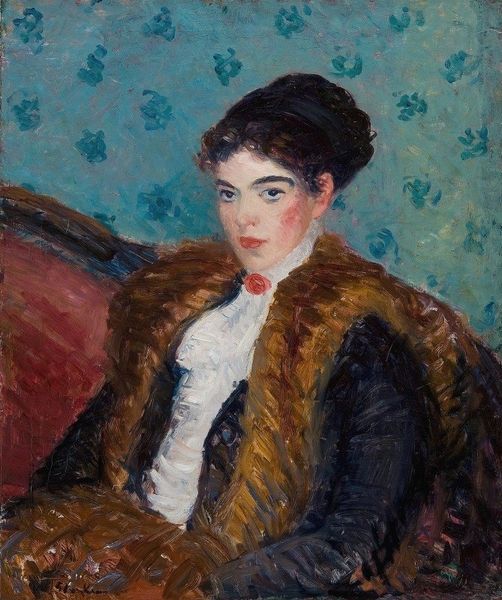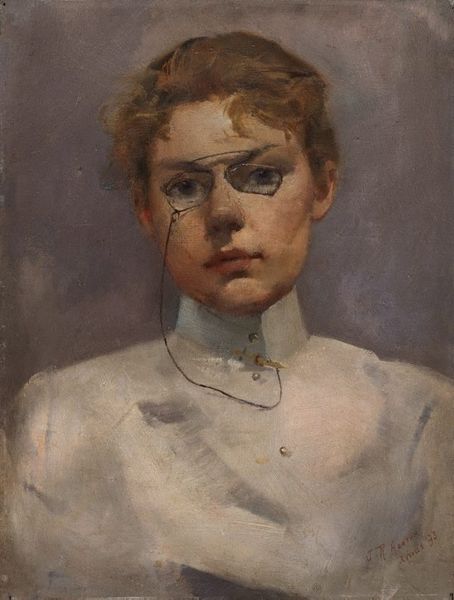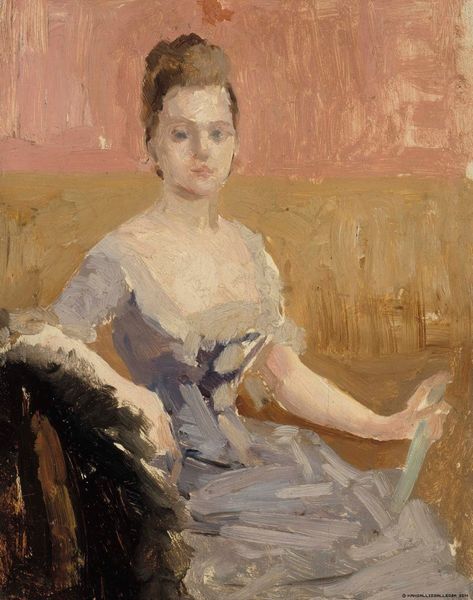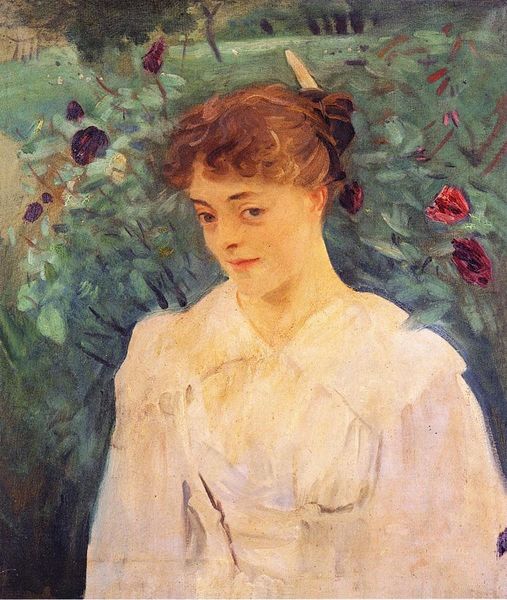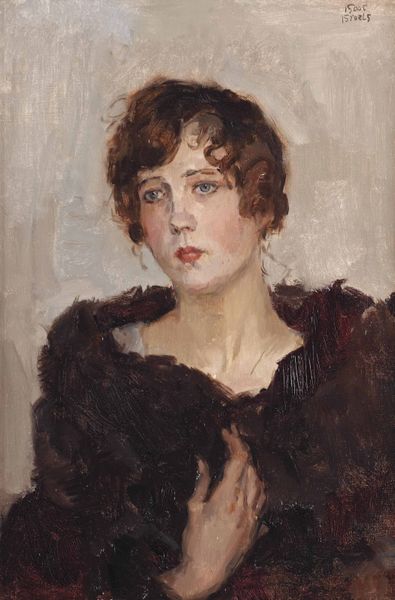
Copyright: Public Domain: Artvee
Curator: Today we’re looking at "Tico Mewes," a portrait completed in 1912 by the artist Leo Putz. Putz was known for his landscape and figurative paintings, and here he works in oil on canvas. Editor: Wow, that watery brushstroke makes me feel a bit seasick, but in a good way! There's almost a… a haze around her. It's dreamy and a bit melancholy, wouldn’t you say? Curator: Absolutely. This work coincides with a particularly interesting period in German art history, marked by anxieties concerning modernity. It comes on the cusp of world war, after all. Putz here positions a woman amidst an almost suffocating floral wallpaper, perhaps pointing toward a rising middle class’ restrictive, almost decorative, position. Editor: Oh, "suffocating," that's good! It IS a lot of look. The vertical stripes and the flowery wall sort of cancel each other out. You almost don’t know where to look, just like the woman herself who looks off into the distance. But there is something playful about it too! A defiance. Curator: Playful in what sense? I read her somber gaze as a counterpoint to the otherwise busy design of the backdrop and clothing. It’s a push and pull between what's expected of her as a subject and her individual desires, don't you think? Editor: Sure! But notice the brushstrokes that dance along her neckline, like little secrets or tickles. Perhaps a hidden humor to it all! Or perhaps that’s just my imagination! Maybe she just got out of bed. Curator: That speaks to Putz's facility with the impressionistic style that you are gesturing toward. There are many social interpretations we can extract from the painting based on both its subjects and its artistic decisions. The historical moment is, indeed, pregnant with meaning and change. Editor: And to think it all started with that white collar! Makes you wanna know what she would say if she was standing right here with us today! "That Leo Putz! What a card!" Or perhaps not. We’ll never really know… Curator: Precisely. What we can glean is this interesting tension between a particular aesthetic, as it exists in history, and the individuality of a specific sitter. The moment is, perhaps, ultimately lost in time. Editor: Maybe… or maybe that “lost” moment is precisely what allows us to connect with her today. Either way, makes you think, doesn’t it?
Comments
No comments
Be the first to comment and join the conversation on the ultimate creative platform.
